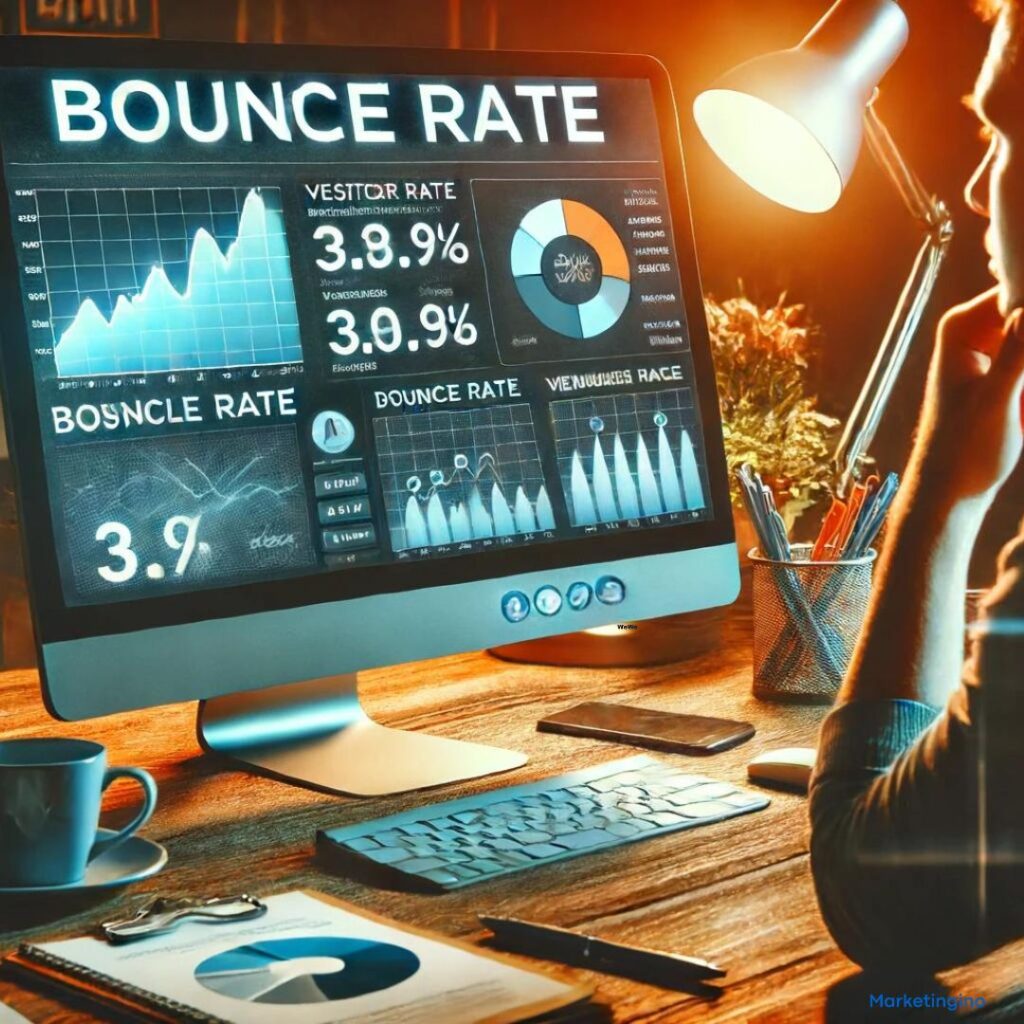In the world of digital marketing and website analytics, understanding user behavior is crucial for optimizing online performance. One key metric that provides insight into how visitors interact with a website is the bounce rate. This article explores what bounce rate is, its importance, factors influencing it, techniques to reduce it, challenges in managing bounce rate, and the future of web analytics.
What is Bounce Rate?
Bounce rate is the percentage of visitors who enter a website and leave (or “bounce”) without interacting with any other page on the site. Essentially, it measures the number of single-page sessions divided by the total number of sessions. A high bounce rate can indicate that visitors are not finding what they are looking for or that the user experience needs improvement.
The Importance of Bounce Rate
Bounce rate is a critical metric for several reasons:
- User Engagement: A high bounce rate suggests low user engagement, meaning visitors are not exploring the site beyond the initial page they land on.
- Content Relevance: It can indicate whether the content on the landing page matches visitors’ expectations and needs.
- SEO Performance: Search engines may use bounce rate as a factor in ranking, with lower bounce rates potentially leading to better search engine optimization (SEO) performance.
- Conversion Rates: A lower bounce rate often correlates with higher conversion rates, as engaged visitors are more likely to complete desired actions such as making a purchase or filling out a form.
Factors Influencing Bounce Rate
Several factors can influence the bounce rate of a website:
- Page Load Time: Slow-loading pages can frustrate visitors, leading them to leave before the page fully loads.
- Mobile Optimization: Websites that are not optimized for mobile devices may have higher bounce rates due to poor user experience on smaller screens.
- Content Quality: Irrelevant or low-quality content can cause visitors to leave immediately.
- User Experience: Complicated navigation, intrusive ads, or a cluttered design can negatively impact user experience and increase bounce rate.
- Target Audience: Mismatched targeting in ads or search results can lead to visitors landing on a page that doesn’t meet their needs.
Techniques to Reduce Bounce Rate
Reducing bounce rate involves improving various aspects of the website to enhance user engagement:
- Improve Page Load Speed: Optimize images, leverage browser caching, and use content delivery networks (CDNs) to reduce load times.
- Enhance Mobile Experience: Ensure the website is responsive and offers a seamless experience across all devices.
- Create Relevant Content: Provide high-quality, relevant content that meets the needs and expectations of your target audience.
- Optimize Navigation: Simplify navigation to make it easy for visitors to find what they are looking for quickly.
- Use Clear Calls-to-Action (CTAs): Guide visitors with clear and compelling CTAs that encourage further interaction with the site.
- Engaging Visuals and Multimedia: Incorporate engaging visuals, videos, and infographics to capture visitors’ interest and encourage them to explore further.
Challenges in Managing Bounce Rate
Managing bounce rate effectively comes with its own set of challenges:
- Accurate Tracking: Ensuring accurate tracking and interpretation of bounce rate data can be complex, especially for websites with varying page types and user intents.
- Content Relevance: Continuously producing relevant and high-quality content that resonates with the target audience requires ongoing effort and resources.
- Balancing Design and Functionality: Achieving a balance between aesthetic design and functional usability can be challenging but is crucial for reducing bounce rate.
- User Behavior Variability: Understanding and adapting to diverse user behaviors and preferences across different segments and devices can be difficult.
Future of Bounce Rate and Web Analytics
As web analytics evolve, the focus on understanding and improving user engagement will continue to grow. Future trends in managing bounce rate may include:
- Advanced Analytics Tools: More sophisticated tools and technologies will emerge, providing deeper insights into user behavior and more precise bounce rate analysis.
- Personalization: Personalized content and experiences tailored to individual user preferences will become increasingly important in reducing bounce rate.
- AI and Machine Learning: The use of AI and machine learning to predict and respond to user behavior in real-time will enhance user engagement and lower bounce rates.
- Holistic Metrics: A shift towards a more holistic approach to web analytics, considering multiple engagement metrics alongside bounce rate, will provide a more comprehensive view of user behavior.
Bounce rate is a vital metric for understanding how effectively a website engages its visitors. By analyzing and addressing the factors that influence bounce rate, businesses can enhance user experience, improve content relevance, and drive higher engagement and conversions. As web analytics tools and techniques continue to advance, managing and optimizing bounce rate will remain a key component of successful digital marketing strategies.




